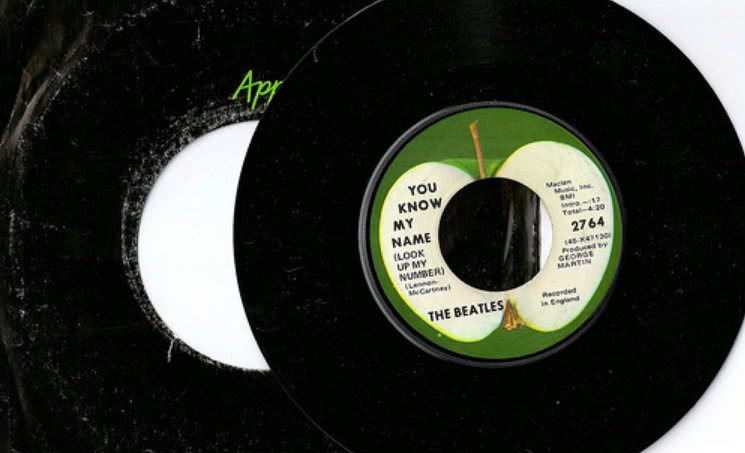In Memoriam: the B-side

In July 1971, Rod Stewart released ‘Reason To Believe’, the first single from his album Every Picture Tells A Story. The song had been previously released by its composer, Tim Hardin, in 1965 and — more successfully — by the Carpenters in 1970. Stewart’s single failed to truly trouble the chart, peaking at #65.
This wasn’t too surprising. After all, Stewart was yet to have a breakout solo single. However, radio stations started to flip the single, and play the B-side: a rambling folk tune about an affair with an older woman. This song, ‘Maggie May’, caught the imagination of other radio programmers and audiences alike, quickly being added to heavy rotation in the U.S. and the U.K.
The label quickly flipped the single itself and rushed these new copies into stores, and the song soon climbed to number one in both charts. ‘Maggie May’ became the second highest-selling single of 1971 in American, also spending four weeks at #1 in Australia.
While this might seem like an anomaly, a lightning-in-a-bottle style stroke of luck – this same tale has repeated itself over and over again throughout the generations.
The third single from Madonna’s Like A Virgin was a song named ‘Angel’, considered her first real failure after a string of groundbreaking pop singles – the B-side, however, was ‘Into The Groove’, which was ineligible to enter the Billboard charts, due to its B-side status, but which was nevertheless named Billboard’s Dance Single Of the Decade by the end of the ’80s.
The list of amazing B-sides continues: ‘How Soon Is Now’ by The Smiths only featured as the B-side to the jaunty-but-ultimate-lesser non-album single ‘William, It Not Really Nothing’; ‘Sappy’ and ‘Aneurysm’ are among the very best songs Nirvana left behind; The Beatles groundbreaking ‘Rain’ was the B-side to ‘Paperback Writer’ and never featured on a Beatles album, while the song that both McCartney and Lennon agree was their favourite (if not the best) Beatles song was the sprawling, silly ‘You Know My Name (Look Up the Number)’ which was the B-side to the stately ‘Let It Be’ single. And so on.
As vinyl singles gave way to CDs, the B-side continued to be an important element in a band’s canon – Oasis followed the model set by The Smiths, The Stone Roses, The Jam, and The Beatles, and pissed away some of their finest songs — recorded during their creative and commercial peak — as B-sides. During the mid-’90s, the way in which the UK chart system worked made it smarter to aim for massive first-week sales and debut high in the charts — which would guarantee an appearance on Top Of The Pops, which would then act to propel further single and album sales.
Following on from this way of thinking, the idea of multiple versions of the same single (with different B-sides, to incentive fans to purchase two or three copies of the same single) became the norm, and UK bands were required to pump out four B-sides for every single. A successful album would often have three or four successful singles, and therefore there became as many or more B-sides as album tracks – an interesting situation that found artists releasing roughly two dozen songs during each album cycle.
READ MORE: IN MEMORIAM – THE SECRET SONG
While this undoubtedly lead to some absolute garbage, it also allowed bands to stretch out, and release some interesting experiments, songs that didn’t belong on albums but deserved to be heard, tunes too poppy to sit on concept albums, and all the rest of it.
You could always tell the very best artists by their curios: B-sides, live outtakes, and all the musical scraps that true fans would devour. Each B-side provided a clue, or at least a nice signpost, of where the band was at. Freewheeling experiments became fan favourites, songwriting attempts from bass players showcased a charm missing from their work proper, unmastered studio run-throughs became cherished recordings, and it all helped to fill out catalogues that might have otherwise been restricted by commercial imperatives or the serious nature of attempting to record an album which was to be seen as an inscrutable body of work. B-sides added colour and charm and character to catalogues.
Even the advent of iTunes didn’t completely kill off this phenomenon, with iTunes Bonus Tracks being an attempt to offer a similar incentive to those wary of purchasing zeroes and ones.
Those days seem to be completely gone now, though. Albums are either streamlined to be hits-only collections, or crammed with filler tracks in order to manipulate the streaming figures and chart highly (read more about the mechanics of this here) – while any bonus tracks are often afterthoughts – remixes, farmed out without much thought, to whoever the hot up-and-coming producer may be.
Times change, and music is arguably as innovative and interesting as ever.
Still, it feels like we are missing out on something major, something that involves discover, digging, and flipping things over.
This article originally appeared on The Industry Observer, which is now part of The Music Network.


































